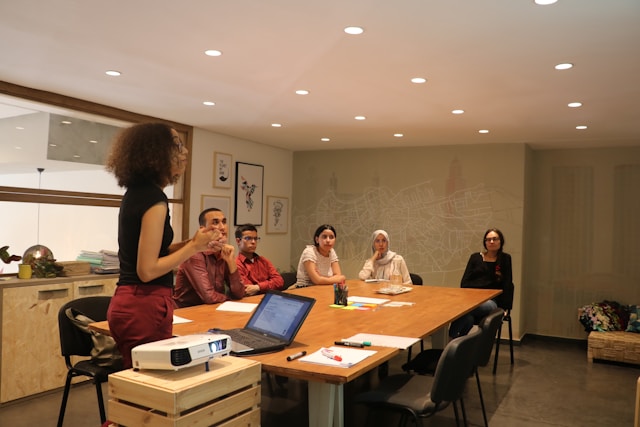The traditional office setup is undergoing a dramatic transformation. With the advent of remote work, flexible schedules, and dynamic collaboration, companies are reimagining the design of their workspaces to meet the evolving needs of employees. This article delves into the fascinating evolution of workspace design, exploring how it is adapting to accommodate changing work patterns and revolutionizing the way folks work. It will also touch on the cost-effective and customizable option of prefab buildings: How they offer a multitude of benefits, with cost-effectiveness being a standout feature, especially when considering discount steel buildings.
Table of Contents
Flexibility Reigns Supreme
Gone are the days of rigid cubicles and fixed desks. Today, flexibility is the name of the game. Modern workspace design emphasizes adaptability to accommodate diverse work styles and preferences. Open floor plans with movable furniture, adjustable partitions, and multipurpose areas are becoming increasingly common. These flexible layouts empower employees to choose the environment that best suits their tasks, whether it’s collaborating with team members, focusing on individual work, or engaging in casual discussions.
Also read: Business Line of Credit: About the Important
Embracing Remote Work
One of the biggest changes in recent years has been the increase in remote work, which has been fueled by changes in work-life balance attitudes and technological advancements. As more employees opt for telecommuting or hybrid work models, workspace design must adapt accordingly. Companies are investing in creating remote-friendly environments within their physical offices, incorporating technology solutions for seamless virtual collaboration, and providing amenities that support remote workers, such as comfortable lounges, quiet pods for video calls, and robust Wi-Fi connectivity throughout the premises.
Also read: Boosting Business with Trustworthy Neteller Casinos: A Smart Financial Move
Moreover, recognizing the importance of maintaining a sense of connection and belonging among remote team members, companies are implementing strategies to foster virtual camaraderie and collaboration. This includes hosting regular virtual team-building activities, organizing virtual coffee breaks or happy hours, and leveraging digital platforms for informal communication and knowledge sharing.
Prioritizing Employee Wellbeing
In the quest to attract and retain top talent, companies are placing greater emphasis on employee wellbeing. Workspace design is crucial in fostering a healthy and supportive work environment. Natural light, indoor plants, ergonomic furniture, and designated spaces for relaxation and mindfulness activities are becoming standard features in modern offices. Additionally, wellness programs, fitness facilities, and access to healthy snacks contribute to a holistic approach to employee health and happiness.
Also read: Understanding The Depths of Proposal Requests
A Versatile Solution
Amidst this evolution, prefab steel buildings have emerged as a versatile option for creating adaptable office spaces, coworking hubs, and collaborative environments. These structures offer several advantages, including rapid construction times, cost-effectiveness, and customizable design options.
Also read: The Pros of Hiring Electrical Contractors for Commercial Establishments
Prefab steel buildings can be easily modified to accommodate changing workforce dynamics, whether it’s expanding office space to accommodate growth or reconfiguring layouts to support new collaboration initiatives. If you can manage to find discount steel buildings, then they can become an even more cost-effective solution. Their durability and sustainability also make them a practical choice for companies looking to minimize their environmental footprint while maximizing operational efficiency.
Also read: Business Guide: Benefits Of Employee Recognition
Conclusion
As work patterns continue to evolve, so too must the design of workspaces. By embracing flexibility, remote-friendly solutions, and a focus on employee wellbeing, companies can create environments that inspire creativity, foster collaboration, and enhance productivity. Prefab steel buildings offer a versatile and practical option for adapting to these changes, providing companies with the agility they need to thrive in an ever-changing business landscape. By prioritizing the evolution of workspace design, organizations can position themselves for success in the future of work.

